At the top of Northants, close to the Cambridge / Huntingdon borders, lie a number of wartime airfields. Relatively high up, they can be bleak and windy, but to those interested in aviation history they offer some amazing stories and fascinating walks. Some of these sites have been covered in earlier Trails e.g. Kingscliffe, Deenethorpe, Spanhoe Lodge and Grafton Underwood, but because of their close proximity, they could all be combined with this trip.
Our visit today in Trail 19 is the former RAF Polebrook, home to the famous Clark Gable, and the site that saw the very first official Eighth Air Force Bombing mission in August 1942.
RAF Polebrook (Station 110)
To the west of Peterborough, across the A1 and through some of the most gorgeous countryside this area has to offer, is Polebrook, a small village that once bustled with the sound of military voices. Originally designed for the RAF’s Bomber Command, Polebrook opened in May 1941, as a Class II airfield built by George Wimpey and Co. Ltd. It had three runways, the main one being (08-26) 1,280 yards in length, with two further runways (14-32) of 1,200 yards and (02-20), 1,116 yards, giving the site a substantial feeling of size. To accommodate the dispersed aircraft, it was designed with thirty hardstands laid mainly to the south-west and eastern sides of the airfield. The administration and technical sites were located to the north.
Aircraft maintenance was carried out in two type T2 hangars and one J type hanger, which sat next to each other, there were in addition, a range of technical buildings, a Watch Office (with Meteorological Section to design 518/40, to which a circular addition was made to the roof) and around 20 pill boxes built to provide defensive cover of the overall site.
To the north of the site across the main road, lies an area known as Ashton Wold Woods. Within the wood is the Ashton Estate, which was purchased and developed by the banker, Lionel Rothschild in 1860. It was after this that the estate was developed into a country home for his grandson, Charles Rothschild.
Charles, a banker by trade, set about creating a formal garden on the estate along with his wife Rozsika, and later his daughter Miriam. He had the grand honour of being the country’s leading expert on fleas, as well as a naturalist and conservationist who was responsible for forming the Society for the Promotion of Nature Reserves in 1912.
After his death and subsequently Rozsika’s in 1940, the house passed to their daughter, but when the construction of the airfield began, the house and gardens were requisitioned for use as both as a hospital and accommodation site. During the war, the site suffered badly through neglect, and post war, Miriam set about restoring parts of the estate. Sadly it was not fully restored and parts continued to fall into disrepair*1.

RAF Polebrook, Taken August 1948*2
A year after Miriam inherited the estate, the first RAF unit arrived, No 90 squadron (28th June 1941) with Fortress Is, otherwise known as Boeing’s B-17C, who stayed until their disbandment in February 1942. Although liked by their crews, the Fortresses were dogged by high altitude problems (freezing guns) and poor bombing results. This early version of the B-17 was not to be a record breaker and had a relatively short life before being replaced later by better models. Between 8th July and September 2nd, 1941 Polebrook Fortresses made 22 daylight attacks against targets including: Wilhelmshaven, Bremen, Brest, Emden, Kiel, Oslo, and Rotterdam. The RAF eventually decided to pull out of these daylight raids and the airfield momentarily fell silent to operational activities.

Delivered to the RAF [AN537] as part of Lend-Lease. This was the last B-17C produced; 90 Squadron [WP-L] Polebrook 13th May 1941. The aircraft later transferred to No. 220 Squadron at Alder-grove, Northern Ireland. (IWM UPL 31070)
The first American units were those of the 97th BG of the 1st Combat Wing. The 97th were constituted on 28th January 1942 and activated in the following February. Passing from MacDill Field in Florida through Saratosa they would make their way across the northern route to Prestwick. On route to their departure points, elements of the group were detached and sent to the Pacific coast, whilst the remainder continued on to Europe. The first manned B-17 #41-9085, ‘Jarrin Jenny‘ arrived in the UK on 1st July 1942 touching down at Prestwick in Scotland after a 3,000 mile long flight via Greenland, with the first ground echelons arriving via the Queen Elizabeth, shortly before on 10th June. Five days after ‘Jarrin Jenny’s‘ arrival, the aircraft would reach their new base, and the Northampton countryside would become a buzz of activity, as much from the curious locals as the Americans they were in awe of.

Bill Colantoni poses in front of B-17 #41-9085 ‘Jarrin’ Jenny’ at Polebrook, the first B-17 to arrive in the UK. (IWM UPL 6830)
Almost immediately after arriving int the UK the four squadrons of the 97th were split. Between June and the end of November the Headquarters unit, along with the 340th BS and 341st BS were based here at Polebrook, whilst the 342nd and 414th BS went to the satellite airfield at nearby Grafton Underwood.
Within a month of arriving on August 17th, the 97th BG would enter service flying the first operational mission of the USAAF from England, under the control of the Eighth Air Force. However, hastily formed, these early groups of bombers were made up of poorly trained crews, many of the gunners never having fired their guns at moving targets, nor had pilots flown at high altitude on Oxygen or in close formation. Such was the rush to get the aircraft overseas, that basic radio, flying and gunnery skills were all lacking, and if they were not to become easy targets for the more experienced and ruthless Luftwaffe, then they were going to have to endure a very steep learning curve indeed. Thus the early part of August was to be filled with intensive flying practice, with the RAF offering their services as mock enemy fighters, trainers and advisers, supporting the Americans through the tough training regime that would hopefully save their lives in the coming weeks and months.
By the 9th August it was decided that the 97th was combat ready and orders came through for their first mission. Sadly the 10th August brought poor weather, and the mission was scrubbed much to the disappointment of the those in the Group.
Two days after this, even before a bomb was dropped in anger, the dangers of flying in cloudy European skies would become all too apparent when a 340th BS, B-17E #41-9098 ‘Big Bitch‘ (not to be confused with #41-9021 ‘The Big Bitch’, which transferred to the 390th BG at Framlingham and was renamed “Hangar Queen“), collided with mountains in Wales whilst on a navigation exercise to Burtonwood, killing all eleven on board. The 97th were now racking up many ‘firsts’ adding the first B-17 fatalities to their extending roll.
August 12th saw the next call to arms, but again the weather played a cruel joke on the men of the 97th, the mission being scrubbed yet again; it was beginning to appear that someone was playing a rather frustrating joke at the expense of the eager young men.
Their next mission, detailed on the 16th was then again called. This time was ‘third time lucky’ and the following day the first official mission of the Eighth Air Force was given the green light. At 15:12 six B-17s in two waves of three left the runway at Polebrook and history was made. After rendezvousing with their ninety-seven RAF Spitfire escorts, they headed for the French coast only to turn away and head for home when just ten miles from the enemy’s coast. This time it was not the weather at fault, the mission was a planned feint to tease the Luftwaffe away from the main force following behind – a group of Twelve B-17s from each of the 342nd, 414th and 340th BS.
This mission was not only the USAAF’s first mission, but it also saw the testing of new electronic counter-measures equipment. Flying alongside this formation were nine Boulton Paul Defiants carrying the counter-measures equipment. Code named “Moonshine“, the equipment consisted of ‘repeaters’ designed to repeat back to the German’s their own radar signals thus giving the impression of a much larger and more formidable force. These first two Polebrook flights split, the first making their feint toward Alderney, whilst the second force flew toward Dunkirk, it was this flight that was accompanied by the nine Defiants. Before reaching the coast though, they turned and headed for home their job done. It was reported by the British that an estimated 150 Luftwaffe fighters rose up to meet the ‘massive’ force, but no interception took place and all aircraft returned to base.
Amongst the main force following on, were three of the Eighth’s most prestigious personnel; the Group’s Commander Colonel Frank Armstrong Jnr who sat beside Major Paul Tibbbets (Tibbets was to go on and drop the first Atomic bomb on Hiroshima thus ending the war with Japan) in ‘Butcher Shop‘; whilst in the second wave flew General Ira Eaker, Commanding General of the entire Eighth Air Force, in ‘Yankee Doodle‘. Bombing results were ‘good’, the clear skies proving to be the bombardiers best friend that day. All aircraft returned, the only casualty being a pigeon that hit the windshield of one of the B-17s as it approached Polebrook. The first mission was over, the ice had been broken.
This first mission, a trip to Rouen, preceded several attacks across the low countries, until in the November when the Group (previously assigned to the Eighth on September 14th) transferred to the Twelfth Air Force. They were now heading for North Africa. Over the period 18-20th November the air echelons departed Polebrook heading for Hurn before flying on to North Africa. The Ground echelons left shortly after, a point at which the 97th’s connection with Polebrook ceased leaving nothing but a legacy behind.
In the short time the 97th stayed at Polebrook they would complete 14 missions over occupied Europe, dropping 395 tons of bombs. They would then go on to earn themselves two Distinguished Unit Citations and complete a number of ‘firsts’ whilst operating in the Middle East. But with the 97th now gone, Polebrook airfield would enter a period of relative calm and peace.
Then in April / May 1943, Station 110 once more resonated with American voices, with the arrival of the 351st BG. Another new Group, they were initially assigned to the 1 Bombardment Wing (1 BW) of the 101 Provisional Combat Bomb Wing (101 PCBW). After the USAAF went through periods of change and renumbering, this eventually became the 94th Combat Wing, (1st Bombardment Division). The 351st operated with B-17s of the: 508th (code YB), 509th, (code (RQ), 510th, (code TU) and 511th (code DS) Bomb Squadrons, distinguished by a triangular ‘J’ on the tail.
A film taken at Polebrook showing a number of aircrew and aircraft of the 351st BG. Several views of the technical and accommodation sites give a good contrast to the views of today, especially the ‘J’ type hangar that appears above.
The 351st were only activated in the previous October, and were, as ‘rookies’, to take part in some of the most severe aerial battles in Europe. Luckily for them though, training programmes back home had improved, and the gaps that were present in the first crew selections had now been filled.
As with all units new to the theatre of war, a short time was spent on familiarisation and formation flying techniques. Shortly before the 351st were deemed combat ready they were practising formation flying over Polebrook when tragedy struck.
Former Washington Redskins player Major Keith Birlem (508th BS) was piloting B-17 #42-29865 ‘YB-X’ when the plane dropped down severing the tail of another B-17 #42-29491 (509th BS) piloted by Capt Roy Snipes. Both aircraft fell from the sky landing as burning wrecks near to the perimeter of the airfield. The accident took the lives of all twenty airmen on-board the two aircraft. Major Birlem had flown his one and only combat mission just three days earlier, on his birthday, gaining experience as a co-pilot with the 303rd BG who were stationed at Molesworth.
Five days later, May 12th 1943, the 351st would be initiated into the war, but it was not the most auspicious of starts to their campaign. The Eighth Air Force put up a force of seventy-two B-17s from the 4 BW and a further ninety-seven from the 1 BW. The call required all fourteen 351st BG aircraft to head for St. Omer / Ft. Rouge in France. After the lead aircraft discovered a fault in the oxygen system, it turned for home, the remaining aircraft then became disorganised and returned to base without dropping a single bomb.
The 351st would improve and go on to attack many prestige targets including: Schweinfurt, Mayen, Koblenz, Hannover, Berlin, Cologne, Mannheim and Hamburg. They would later go on to target submarine pens, harbours and ‘V’ weapons sites. Ground support was provided for both the Normandy invasion, the Battle of the Bulge and other major ground battles up to and including the crossing of the Rhine.
In October 1943, the unit received the first of its Distinguished Unit Citations (DUC), with highly accurate bombing in very challenging conditions raising the standing of this new group. A second DUC was to follow in January 1944 for action deep in the heart of Germany. During an attack on Leipzig in the ‘Big Week’ campaign of 20th-25th February 1944, two crewmen of the 510th, 2nd Lt Walter Truemper (Navigator) and Sgt. Archibald Mathies*2 (Flt. Engineer), both received Medals of Honour for taking over their stricken aircraft when both Pilot and Co-Pilot were injured / killed. B-17, TU-A ‘Ten Horsepower‘ (#42-31763), was directly hit by flak, both Truemper and Mathies nursed the aircraft back to Polebrook where they allowed the other crew members to bail out safely. On attempting to land the aircraft for the third time, it crashed (Great North Road) between Glatton (Trail 6) and Polebrook exploding, killing all three remaining crew members.

The last moments of B-17G “Ten Horsepower” (TU-A, #42-21763) piloted by Second Lieutentant Walter E Truemper and Sergeant Archibald Mathies, as it is guided by a fellow aircraft after the pilot was severely injured. Truemper and Mathies unsuccessfully attempted to land the aircraft at Polebrook and were posthumously awarded the Medal of Honour for their bravery, 20th February 1944. (IWM FRE 4724)
It was also during this time that (Cp.) Clark Gable was stationed at Polebrook, initially to make recruitment films for air gunners, flying five combat missions in total and taking a film crew on each one. The first was on 4th May 1943 and his last on 23rd September that same year. He was initially awarded the Air Medal, and later the Distinguished Flying Cross, finally leaving Polebrook with over 50,000 feet of film on 5th November 1943. In 1944, the film ‘Combat America’, narrated by Gable himself, was shown in theatres around the United States. The film covers the 351st from their departure from the United states through their campaign. Included is footage of the collision between the two B-17s on May 7th 1943.
Another remarkable record was set at Polebrook, between 13th June 1943 and January 11th 1944, when Maj. Eliza LeDoux would lead the 509th BS (351st BG) for fifty-two consecutive missions without losing either a single man nor a single aeroplane. An astonishing example set when at the same time other US Groups were losing aircraft at a rate of around 5%.

Major LeDoux, CO, 509th BS, 351st BG, 20th June 1943. He led his squadron without loss for 52 consecutive missions (IWM FRE4709).
The 351st remained at Polebrook until shortly after VE day, returning to the US and becoming deactivated on August 28th 1945. Polebrook then became quiet once more being put under care and maintenance until its closure in 1948.
During the three years the 351st were at Polebrook, they flew a total of 279 B-17s on 9,075 sorties with 7,945 of them dropping 20,778 tons of bombs. Air gunners on these aircraft were credited with 303 enemy aircraft destroyed. In all they flew 311 credited missions losing 175 B-17s in all.
One interesting point about Polebrook was that as a station under care and maintenance, it is thought that within its hangars was the last Short Stirling to be owned by the Royal Air Force. A MK.V aircraft, it was struck off charge in 1946, a point that ended a long and interesting career for an aircraft that has long been considered a failure. As a bomber, this was certainly partly true, the many teething problems it had suffered – a lack of altitude, poor climb rate, continued engine problems and a tendency to swing on take off – all giving it a bad name. However, it could out manoeuvre a Lancaster and it could give any fighter of its time a run for its money. By the end of its flying career, the Stirling was loved by its crews, it had been a successful transport aircraft, mining platform and had brought many POWs back home after the war. Sadly though, none survived other than as wrecks at the bottom of Fjords or as bits salvaged from various crash sites across Europe. The days of the Stirling were now over and the only person to gain any benefit from them was to be the scrap man.
But it wasn’t quite the same for Polebrook. Post war and with the heightened threat from the Soviet Union, Polebrook was once more brought back to life, with three Thor missile sites being constructed in the centre of the main runway. These remained operational until August 1963 when they were finally removed and the site closed off. It was sold back to the former owners, at which point the airfield’s runways were dug up for valuable hardcore and many of the buildings were pulled down.
Standing on the site now, the wind howling across the open fields, it is easy to imagine how the site must have been all those years ago. A memorial stands on what remains of the main runway, a small section of concrete, overlooking the airfield.
Two benches carved in marble with a main triangular stone are beautifully carved and cared for. Trees planted in lines mark the threshold where many bombers would have left on their way to targets in occupied Europe. A guest book is supplied in a wooden box and signatures reveal visitors from all over the world.
Across the road from here, tucked away in the corner of a field, is the main battle headquarters. Originally a sunken chamber with communications centre and raised platform, it allows observers a full 360 degree view over the site and surrounding area. Built to specification 1008/41 it is sadly now flooded and standing proud of the ground. Both access points are open to the more adventurous, or fool hardy, explorer.
The single largest and most well-preserved building is the original ‘J’ type hangar. Used for farming purposes, it is well looked after and visible from most parts of the site. The T2 hangars that would have been opposite are gone. as has the control tower and other main structures.
The three Thor sites are still standing, used by the farmer for storage. They were (at the time of visiting) buried beneath hay bales and farm machinery. One is clearly visible however, the blast walls standing proud. Whilst careful exploring around the others reveals tracks and remains of the housing for the Liquid oxygen supply tank and hydropneumatic controllers, all ancillary buildings are gone.
The best evidence of life at Polebrook can be seen from the entrance to the ‘industrial’ site on the Lutton to Polebrook Road. This area, now woodland, is actually designated a nature reserve and access is freely available. This small road is the original entrance to the airfield and to both your left and right are the technical areas. Beneath the leaves and muddy floor, road ways still lined with kerbstones, are visible, and whilst the road way is not clear, it is possible to make out the general view of the site.
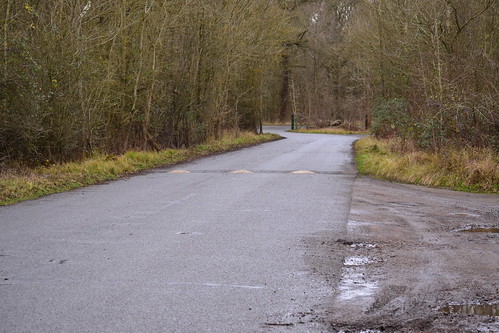
The original entrance to the airfield. The main road in the distance separates the technical areas, left and right, from the accommodation areas in the woods ahead.
Hidden amongst the trees and brambles, are a few good examples of the buildings once used. Most, are now piles of concrete, but quite a few shelters are still about and accessible. Storage tanks are open, the covers gone and so as a caution, tread very carefully amongst the bushes watching your footing.
From the entrance, to your left and a little further in, are two buildings, still shells but intact. The larger, I believe is the operations block, a smaller building next to it may have been a power or perhaps communications building.
Polebrook is unique in that it has/had examples of twin looped pill boxes. Here one firing window is situated above the other. A few other more standard examples are also on site some easily seen from the road or track.
I believe that the office on the site contains a full-scale model of the airfield as it was, and that the owner is more than helpful to visitors. Unfortunately on the day I was there, I was unable to take advantage of this so a return visit is certainly on the cards for later.
I was amazingly surprised by Polebrook. It is a truly an atmospheric place with plenty to see for the visitor; remnants of a time gone by lay hidden amongst the trees and brambles of the now wooded area, and little reminders of lives lost, lay beneath the leaves. A howling winter wind replaced by summer sun, carry the voices of those young men across its open expanse and through its decaying walls of history.
Sources and further Reading
*1 Ashton Wold – Historic England information sheet List Entry Number: 1001715 accessed 6/2/19
*2 Photo taken from Wikipedia open source. http://commons.wikimedia.org/wiki/File:Polebrook-Aug1948.png
*3 The story of Archie Mathies appears in the ‘Heroic Tales‘. The crew list of B-17 ‘Ten Horsepower‘ was:
Pilot: Clarry Nelson,
Co-Pilot: Roland Bartley,
Navigator: Walter Truemper
Engineer / Top Turret Gunner: Archie Mathies
Bombardier: Joe Martin (POW)
Radio Operator: Joe Rex,
Ball Turret Gunner: Carl Moore,
Waist Gunner: Tom Sowell,
Waist Gunner: Russ Robinson,
Tail Gunner: Magnus Hagbo
Anton. T., & Nowlin. B., “When Football went to War” 2013, Triumph Books
Freeman, R., “The Mighty Eighth War Diary“, (1981) Jane’s Publishing.
Freeman, R., “The Mighty Eighth“, (1986), Arms and Armour Press.
For further information, see the superbly detailed website dedicated to the 351st BG with photos of crews and aircraft.
If time allows, the nearby Polebrook church also has a memorial dedicated to the personnel of the base.
Polebrook was originally visited in the latter part of 2014.
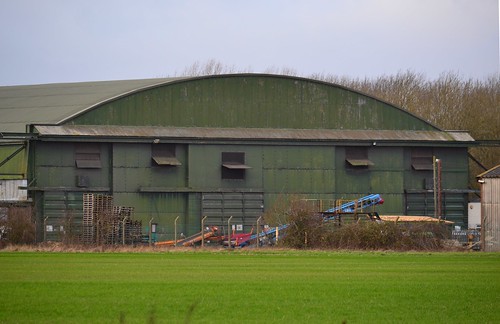
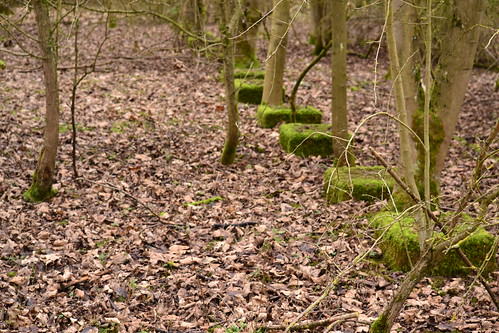
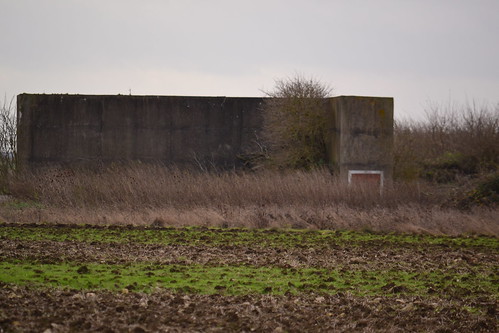
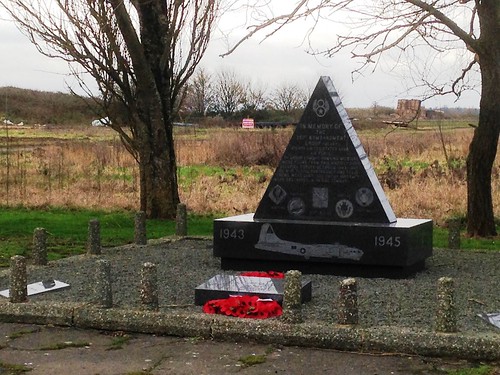
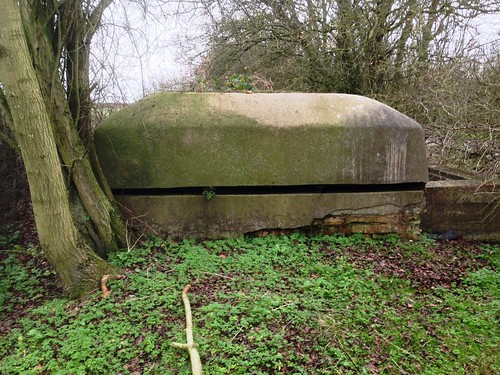
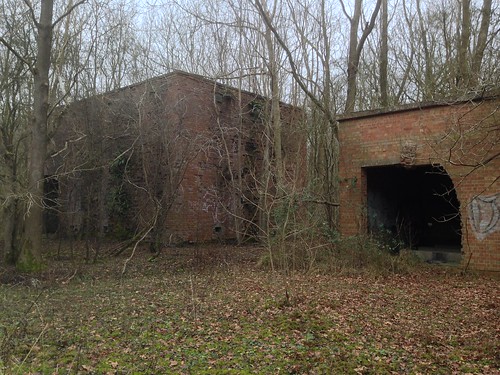
My family have lived at Polebrook Lodge (the only prewar building to remain on the site of the airfield) since 1975 and we are the current owners of what was once accommodation, offices and workshops, approximately 100 acres.
We have welcomed many of the ex- servicemen, and latterly, their descendants, over the years and have heard a great many most interesting stories. The area is now a nature reserve which we manage. However it is NOT open to the public and there are no public rights of way.
If interested persons would like to visit I would suggest they could come by appointment and should contact me by email at Barney.broadbent@gmail. Com
LikeLiked by 1 person
Thank you for clarifying that Barney, I hope people do indeed contact you first.
LikeLike
Thank you, Mr. Broadbent. I believe that these young men who came here to Liberate Europe need to be remembered. I also recognise that the historical sites are on private land and it is refreshing to see a landowner who understands the motivation of many people to visit them. I am visiting Sywell in June for an Airshow and I will be visiting some of the sites, so I may be in touch. My best wishes to you, Keith Meloy.
LikeLike
Good luck Keith and enjoy the show!
LikeLike
Pingback: RAF West Raynham Trail 21 – Part 2. | Aviation Trails
Hi, as a local resident I often stop and reflect at the memorial. The write up is excellent. There are (I think) also a few relics slightly further afield. On the bridle way that runs from the to of Warmington to Polebrook (accessed from the road running up from the A605 between Warmington and Oundle) there are a set of what looks like accommodation blocks fronted by two shelters. The woods around also have various blocks of concrete and brick. They are in the shadow of a modern water tower and sadly one block is filled with fly tipped debris, several sections are collapsed so I don’t think they will be around for many more years.
LikeLiked by 1 person
Hi Paul. Many thanks for the kind words and the additional information. I often don’t sadly, have time to wander extensively which is is real shame as I know I do miss some things. One day soon hopefully, I shall make a return trip and see what of these I can find. Hopefully they’ll still be there when I do but it doesn’t sound promising for them.
LikeLike
Thanks, I use the track regularly and will try at get some shots for you if you are interested? I’m along there doing wildlife photography anyway.
LikeLiked by 1 person
That would be great if you could. Thank you so much, I appreciate that. When you have them email them to aviationtrails@yahoo.co.uk rather than through here as they don’t seem to get through. Many thanks again I appreciate the at.
LikeLike
I live in the epicentre of all these airfields, we keep them clear of leaves and give them an annual polish. On September days as the sun gives off that warm the melancholic feelings of the long ago days when the young heroes gave there whole for the freedom of the world comes across. As you gaze across the fens to the south east you can imagine the sounds and sights of their heroic return. Never to be forgotten, with hope that future generations will also respect those who gave their lives. Only the wind in the trees now whispers their names and the crack of the flags salute in the breeze. RIP
LikeLiked by 1 person
Beautifully put. Thank you.
LikeLike
Pingback: A Happy Christmas! | Aviation Trails
Very nice write up, I’m so fascinated with the history of all the sites around me, I’m so muchy living in Rushden I’m surrounded by former airfields!! I’ve been to polebrook once before but couldn’t find the 360 viewing platform command center? Do you have contact details for the current owner as i would love to be able to explore the site but with permission.
LikeLiked by 1 person
Hi Brendan, thank you for the nice comment. Unfortunately I don’t have the contact details but the farm office is not far from the public highway. The majority of of what I saw i.e. the technical area buildings and battle headquarters are on public land. That is to say there are public footpaths that traverse it. The battle headquarters is on the edge of a field next to the road but when I was there, it was flooded and likely to be for the majority of the time. I don’t tend to wander on to private land, certainly not very far, and so everything that can be seen on these pages are accessible by the public. I hope this helps.
LikeLike
Pingback: RAF Polebrook – the First USAAF Bombing mission (Pt 2). | Aviation Trails
Pingback: RAF Polebrook – The First USAAF Bombing mission (Pt 1). | Aviation Trails
Wow very nice write up and great pictures. Clark Gable! I had no idea
LikeLiked by 1 person
Thanks. It’s interesting how many celebrities were based here before they were famous!
LikeLiked by 1 person
Pingback: 50 Aviation Trails Reached! | Aviation Trails
Pingback: 2017 – A Look Back Over The Last Three Years. | Aviation Trails
Pingback: RAF Grafton Underwood – a remarkably important and historical place. | Aviation Trails
Brilliant Write-Up.
LikeLiked by 1 person
Thank you very much, it’s appreciated.
LikeLike
Pingback: RAF Polebrook (USAAF Station 110) | Aviation Trails